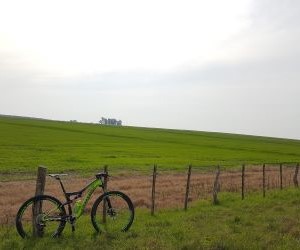Learn how to deal with punctures on long rides with prevention tips, repair techniques, and smart gear choices to keep rolling without stress.
HOW DO I AVOID CHAFING IN CYCLING?
Chafing is one of the most dreaded issues for cyclists, turning a fun ride into a painful grind. It happens when friction, sweat, and pressure combine to irritate the skin, often in sensitive areas like the thighs, groin, and underarms. But the good news is that chafing can be largely prevented with the right preparation. This guide explores the causes of cycling chafing and provides practical, tested strategies to stop it before it starts—so every ride stays smooth and enjoyable.

Choosing the right clothing
The foundation of chafing prevention lies in your clothing. Modern cycling apparel is designed not only for aerodynamics but also for comfort and skin protection. Wearing the right gear can dramatically reduce friction points and wick away moisture that contributes to irritation.
Importance of proper cycling shorts
A high-quality pair of padded cycling shorts is your first defense against chafing. The chamois pad provides cushioning and reduces direct skin-to-saddle friction. Look for shorts with seamless construction and multi-density padding for added comfort. Avoid wearing underwear beneath cycling shorts, as extra fabric creates friction points.
Fabric and fit considerations
Synthetic, moisture-wicking fabrics are preferable to cotton, which retains sweat and increases irritation. A snug but not overly tight fit ensures the fabric moves with your body rather than against it. Bib shorts, with their built-in suspenders, often provide a better fit and keep the chamois in place during long rides.
Invest in quality padded cycling shorts.
Avoid cotton and opt for moisture-wicking fabrics.
Choose bib shorts for better chamois stability.
Skip underwear to minimize fabric layers.
By focusing on well-designed, purpose-built cycling clothing, you eliminate one of the biggest contributors to chafing: poor fabric choice and bad fit. This small investment pays big dividends in ride comfort.
Skin care and lubrication
Beyond clothing, skin preparation is crucial to reducing friction. Proper care before, during, and after rides creates a protective barrier and speeds recovery if irritation occurs.
Using chamois cream effectively
Chamois cream acts as a lubricant, minimizing skin-to-skin and skin-to-fabric friction. Apply generously to high-friction zones like the inner thighs, groin, and buttocks. Some riders prefer applying it directly to the skin, while others apply to the chamois pad itself—both methods are effective depending on personal preference.
Post-ride hygiene
After a ride, promptly shower to remove sweat, bacteria, and cream residues. Clean skin prevents irritation from worsening into sores or infections. Using mild soap helps avoid stripping natural oils that keep skin resilient. For riders with sensitive skin, applying an unscented moisturizer post-shower aids in recovery.
Apply chamois cream before long rides.
Target common friction zones with lubrication.
Shower immediately after rides to cleanse skin.
Moisturize to aid skin recovery and resilience.
Cyclists often underestimate the role of skin care. Just as you maintain your bike chain to reduce friction, maintaining your skin ensures durability ride after ride. A simple pre- and post-ride ritual can prevent most chafing issues before they even start.
Bike fit and riding habits
Even with the best clothing and creams, poor bike fit can sabotage your comfort. Misaligned saddles, handlebars, or posture can increase pressure and friction, creating hot spots that evolve into chafing.
Saddle choice and positioning
The saddle is one of the most critical factors. A saddle that is too wide, too narrow, or poorly angled can cause excessive rubbing. Professional bike fitting sessions help identify the optimal saddle width, shape, and tilt for your anatomy. Additionally, regularly checking saddle height and fore-aft position ensures balanced weight distribution.
Adjusting riding techniques
Changing positions during long rides helps prevent constant pressure on the same contact points. Standing on the pedals periodically allows blood flow to return and reduces skin friction. Smooth pedaling technique also minimizes unnecessary saddle movement, further reducing irritation risk.
Invest in a professional bike fit.
Choose a saddle that matches your sit-bone width.
Adjust saddle tilt to prevent sliding and rubbing.
Change positions during long rides to relieve pressure.
Chafing is not only a clothing or skin issue—it’s also mechanical. A bike that doesn’t fit your body will inevitably increase friction. By combining good gear, skin care, and proper fit, you address the problem from every angle and ride longer without pain.
YOU MAY ALSO BE INTERESTED






